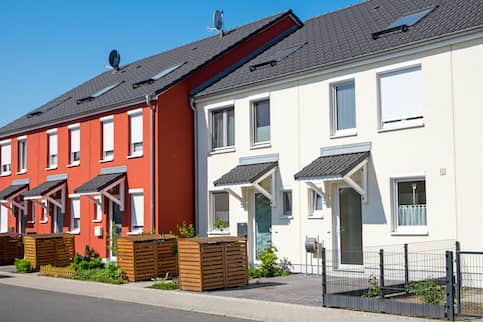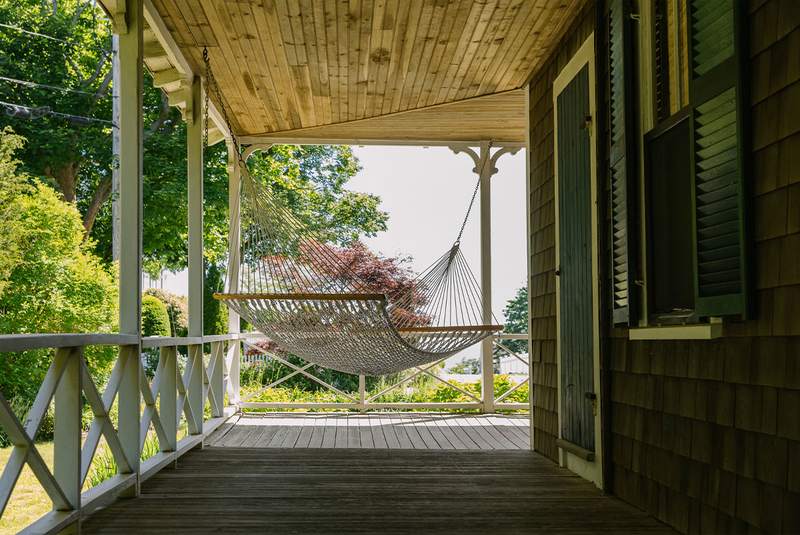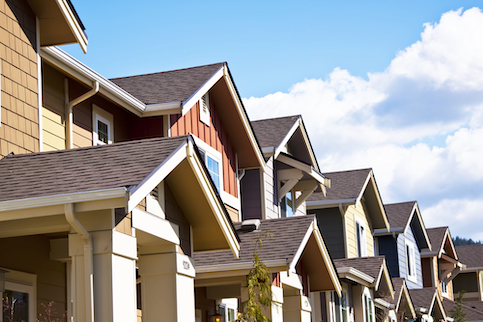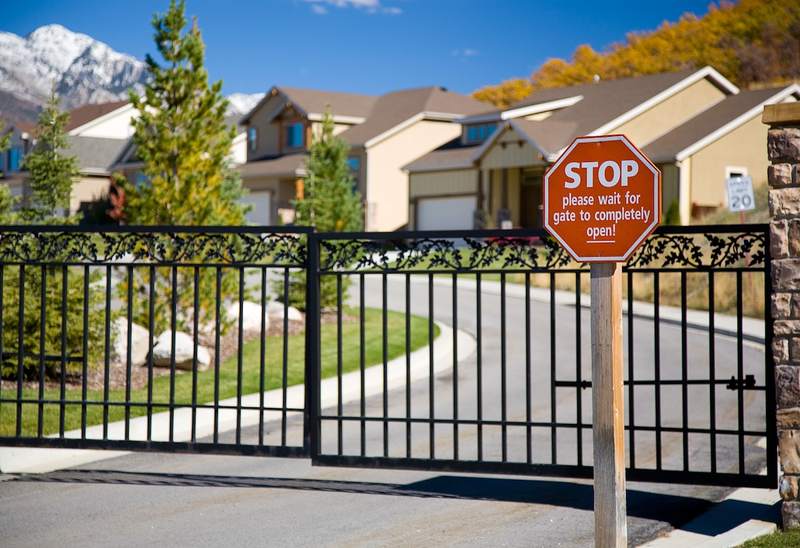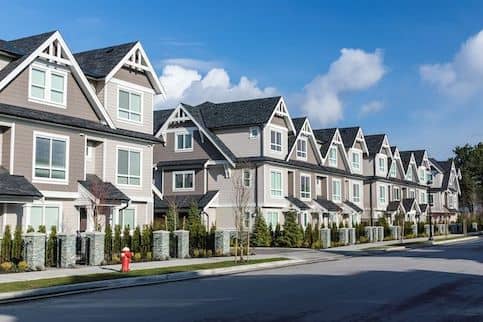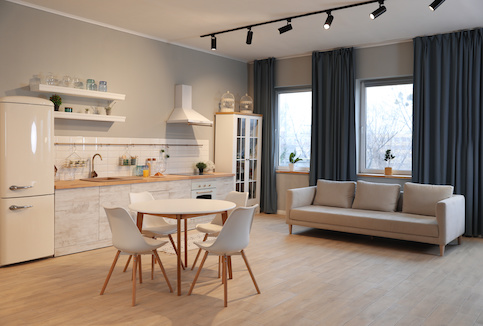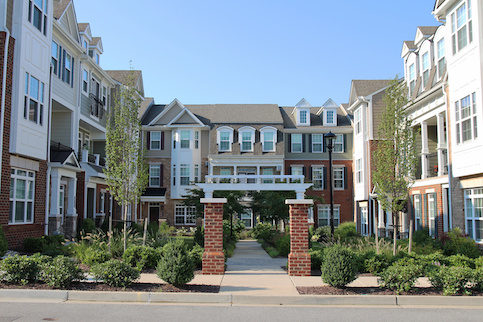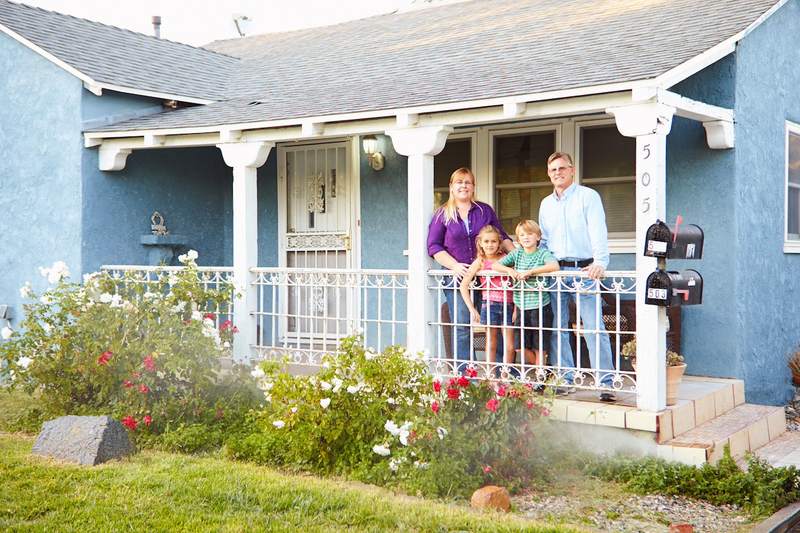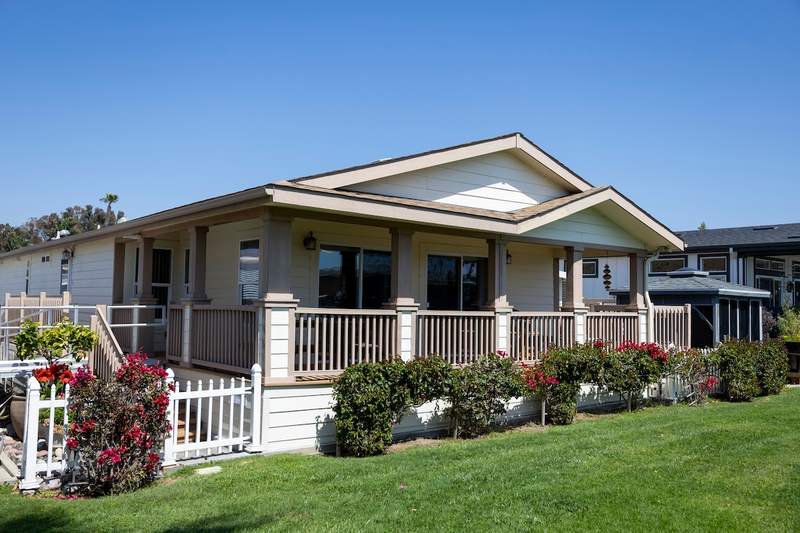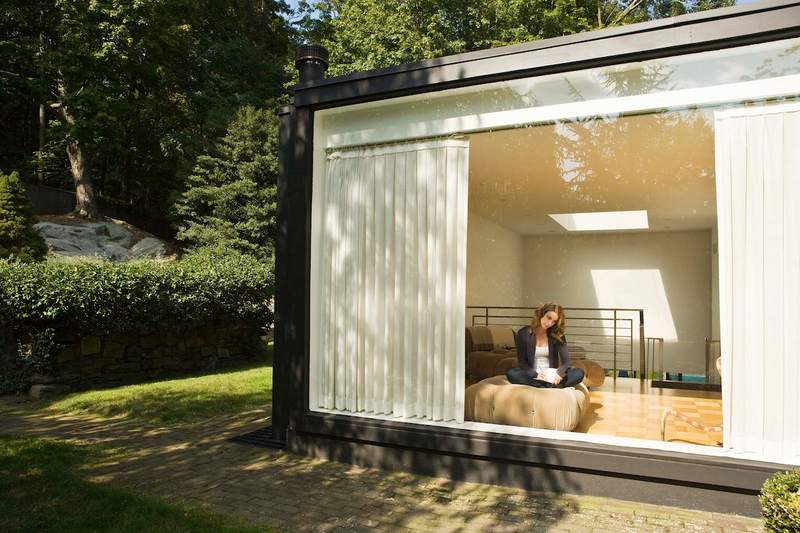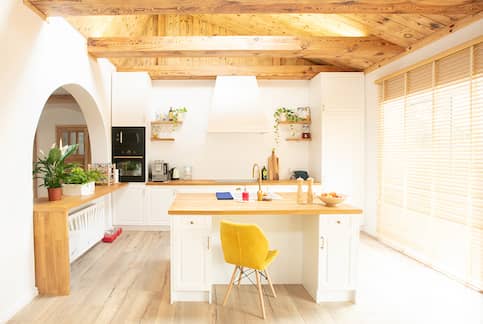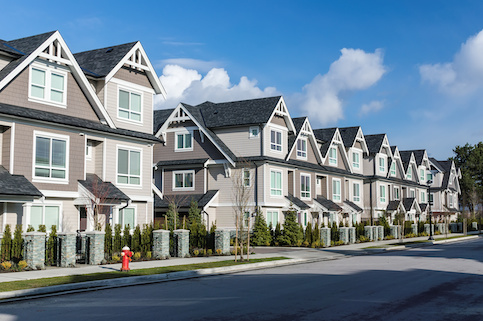If you’re looking to invest in real estate, you likely will be looking at multifamily homes. The term multifamily home means different things in different contexts, so it’s a good idea to understand what it means and how it differs from other types of property.
Key Takeaways:
- A multifamily home is a property that contains more than one unit.
- If you’re looking to invest in real estate, buying a multifamily home could help you earn rental income – if you’re up for the responsibilities and risks of being a landlord.
- There are different types of multifamily homes to choose from – including duplexes, apartments, condos, townhouses and more.
Multifamily Home Definition
A multifamily home is a residential property that can be occupied by multiple households. Common examples include apartment complexes and condominiums, which also are known as multidwelling units and are common in densely populated cities.
Each unit in a multifamily home has its own kitchen and bathroom, as well as its own entrance and utility meters. The property’s owner can live in one of the property’s units – known as owner-occupied property – or rent out all of the units.
Who Are Multifamily Properties For?
Multifamily properties may appeal to the following individuals:
- Novice real estate investors who want to buy a primary residence and rent out the additional units.
- Multigenerational families, which includes those with aging family members or a college-age adult. It also can include families who share child care responsibilities and want to live in close proximity while still retaining their privacy.
- Experienced real estate investors who want the benefit of multiple units within one property purchase.
- Anyone who wants to add rental income to their earnings.
Multifamily homes make good investments for new investors because it allows them to use a popular strategy called house hacking, where the owner lives in one unit and rents out the others. This lets you own a home and generate income – possibly enough to cover your mortgage payment –while you build equity.
What’s Your Goal?
Buy A Home
Discover mortgage options that fit your unique financial needs.

Refinance
Refinance your mortgage to have more money for what matters.
Tap Into Equity
Use your home’s equity and unlock cash to achieve your goals.
Multifamily Vs. Single-Family Homes
The obvious difference between a multifamily and a single-family home is the number of households living in it. Other key distinctions include:
- Cost. Single-family homes typically cost less than multifamily homes.
- Risk. Single-family homes generally are easier to sell if you need to offload your investment.
- Revenue potential. Because multifamily homes can house more than one family, there is the potential to earn rental income to offset your expenses.
- Mortgage. Multifamily homes might need a commercial real estate loan as opposed to a traditional mortgage, depending on the type and size of the building.
Is A Multifamily Or Single-Family Home A Better Investment?
Multifamily homes cost more than single-family homes and can be riskier to invest in, but they also generate rental income. This extra cash can help you pay your mortgage and expenses. However, you’ll also be in charge of maintaining the building and making repairs for your tenants. Multifamily homes can be a good investment, but you’ll need to make sure you’re earning enough to cover your expenses and get a decent return.
Ready To Become A Homeowner?
Get matched with a lender that can help you find the right mortgage.
Types Of Multifamily Properties
Multifamily homes come in different sizes and structures. The most common types of multifamily homes include:
- Duplexes
- Triplexes
- Fourplexes
- Condominiums
- Apartment buildings or complexes
- Townhouses
- Garden apartments
- Semi-detached houses
Let’s take a more detailed look at each type of multifamily home.
Duplexes, Triplexes And Fourplexes
Typically, a “plex” home is built on a single plot of land and contains two to four units. The units can share walls, but each must have its own entrance, utility meters, kitchen and bathroom to meet the typical definition of a multifamily property.
You can buy a duplex, triplex or fourplex with a residential mortgage rather than a commercial loan, which makes it easier for aspiring buyers to finance.
Apartments
Apartment units can have neighbors on all sides. Thus privacy, noise and sharing amenities with neighbors are some of the chief concerns of apartment living. Typically, one person owns an apartment complex and rents out each unit to tenants.
Remember, any property with more than four units is considered a commercial property, even if the property is used for residential purposes. This makes most apartment buildings commercial properties.
In the legal sense, the term multifamily property refers to apartment buildings or other housing complexes with at least five units.
Condos
Condominiums differ from apartments in that the buyer only owns the interior of the unit. They share ownership of the condo’s common areas, which includes the building exterior, common areas such as hallways, and amenities such as parking spaces, a pool, a club house, etc. This is why condos are almost always part of a condo association or a homeowners association that governs the building and collects fees from each owner to maintain and repair the common areas.
Townhouses
Townhouses are similar to condos except that the buyer owns the entire building, including its exterior, as well as the land it sits on. This means townhome owners are responsible for maintaining the outside of the building and the land it’s built on.
Townhouses typically are built in rows, usually in cities where land and real estate are at a premium. They may have multiple levels but also share a wall with the neighboring home. Because of the common walls, townhouse owners often function within an HOA that governs the entire block. But since there are fewer shared amenities, HOA fees for townhouses tend to be lower than with condos.
Garden Apartments
A garden apartment is typically a unit on the ground floor of a property that faces a shared garden area. Each apartment has its own entrance, kitchen, living area, bedrooms and bathroom. Tenants often have access to a yard or green spaces, as well as access to any shared building amenities. However, there can sometimes be less privacy, since you’re living on the ground level of a building.
Semi-Detached House
A semi-detached house, often used as another term for a duplex, is a single-family home that shares a wall with a neighboring home. Each home has its own entrance and living space but is connected to the home next door through a shared wall. Semi-detached houses can typically be found in suburban areas and are popular because they strike a balance between the privacy of a detached house and the affordability of a condo.
Take The First Step To Buying A Home
Find a lender that will work with your unique financial situation.
How To Buy A Multifamily Home In 7 Steps
If you think a multifamily home might be right for you, here are seven steps to take to buy one:
- Find the right property. Before you start searching online listings, decide on the type of multifamily home you’re looking for, how many units you want, and your price range.
- Evaluate the location. It’s also important to consider the location, especially if you’ll be living in the home yourself. Weigh how desirable the location would be to potential tenants.
- Assess rental income potential. You’ll want to know how much you’re going to make off this investment property. Cap rate is a figure that can help you determine your potential return on investment. You can calculate the cap rate by estimating how much you’ll take home after expenses each year (aka your net operating income) and dividing it by the current market value of the property. You’ll typically want a cap rate of between 4% and 12% for the investment to be worthwhile.
- Inspect the property. It’s important to do your due diligence to figure out how much money you’ll need to invest in the property before you can rent it out. The home inspection can help you determine what repairs and upgrades may be needed.
- Understand the zoning regulations. It’s important to understand the local zoning laws that dictate how the property can be used. For example, you’ll want to determine whether the property is zoned for commercial or residential real estate.
- Find financing. To get approved for a home loan, you’ll need to meet the lender’s eligibility requirements when it comes to your credit score, income, down payment and other criteria. Be sure to compare offers from several different lenders to get the best terms on your mortgage.
- Close the deal. Once your mortgage application’s been approved, it’s time to close on your multifamily home. This involves making your down payment, paying your closing costs, and signing all the necessary paperwork. Then the title of the home will be transferred to your name, and you’ll become the legal owner.
Mortgage And Financing Options For A Multifamily Home
You can buy some multifamily homes with a conventional or government-backed mortgage, such as an Federal Housing Administration multifamily loan. Some states offer special loan programs for multifamily homes. In general, qualifications vary depending on the loan type. For instance, you can use a Veterans Affairs loan to buy a multifamily property, but the building can have no more than four units, and the borrower must occupy one of them as their primary residence.
Larger multifamily homes that are being used for business purposes – like rental income – will require a commercial real estate loan, which typically requires a down payment of at least 20% of the purchase price. The exact eligibility requirements will vary depending on the lender.
Pros And Cons Of Multifamily Housing
As an investor, there are many benefits to buying a multifamily property, but like any potential investment, it does come with downsides.
Pros
Some of the advantages of owning a multifamily home include:
- Rental income potential. Even if you live in one of the units, you can rent out the others to tenants and generate a stream of rental income, which will help pay the mortgage.
- Tax benefits. You should be able to deduct as a business expense certain operating expenses and repairs. Different rules apply if you live in one of the units yourself.
- Economies of scale. You can maximize the amount you make from one property by renting it out to several tenants.
- Diversifying your investments. Instead of putting all of your investment income into stocks and bonds, buying a multifamily property for rental income helps you build a real estate portfolio.
Cons
Buying and owning a multifamily home can come with:
- Higher initial costs. Multifamily homes tend to cost more than single-family homes.
- Costs of being a landlord. As the landlord, you’re on the line for the costs of maintenance and repairs – not to mention the mortgage for the building.
- Competition for properties. Multifamily homes for sale are less common than single-family homes, and availability can be scarce in certain areas.
- More complex management. A multifamily building is not only larger but also more complex. For example, you’ll have several kitchens and bathrooms to maintain.
- Potential for higher vacancy rates. Multifamily home living isn’t for everyone, and there’s a chance you could end up with multiple units vacant at the same time.
FAQ
Here are answers to some frequently asked questions about multifamily homes.
The Bottom Line
A multifamily property may be just the ticket for those in certain circumstances – novice and experienced real estate investors alike, as well as multigenerational families. Multifamily homes are typically more expensive than their single-family counterparts to buy and to maintain, but they come with higher potential for rental income.
More From Quicken Loans:

Rory Arnold
Rory Arnold is a Los Angeles-based writer who has contributed to a variety of publications, including Quicken Loans, LowerMyBills, Ranker, Earth.com and JerseyDigs. He has also been quoted in The Atlantic. Rory received his Bachelor of Science in Media, Culture and Communication from New York University. He also completed the SoFi/Coursera Fundamentals of Personal Finance Specialization consisting of five courses: Introduction to Personal Finance, Saving Money for the Future, Managing Debt, Fundamentals of Investing, and Risk Management in Personal Finance.
